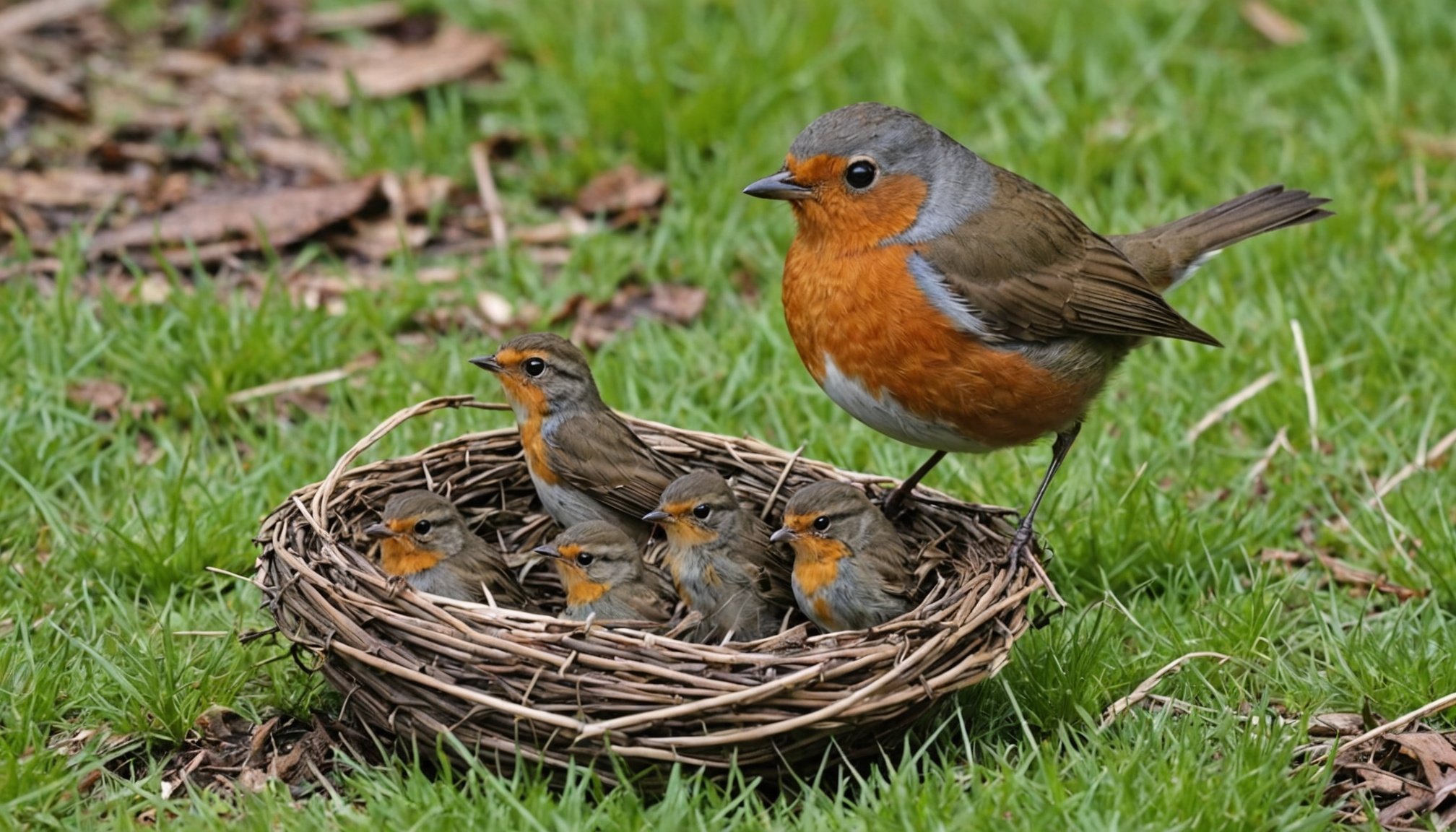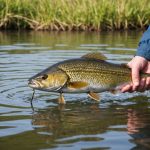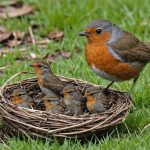Hand-rearing orphaned British robins can be a rewarding yet challenging endeavor. This guide provides essential techniques to ensure these fledglings thrive. From understanding their dietary needs to creating a safe environment, every detail matters. You’ll discover practical tips for monitoring their health and behavior, along with insights into their unique characteristics. By adopting the right approach, you can make a significant difference in the lives of these vulnerable birds. Embrace the journey of nurturing orphaned robins and contribute to their survival in the wild.
Understanding the Needs of Orphaned British Robins
Understanding the unique needs of orphaned British robins is crucial for their survival and rehabilitation. These small birds are native to the UK and are often found in gardens, woodlands, and parks. Their natural habitat provides them with the necessary resources for growth and development.
Dans le meme genre : Caring for Elderly Cats with Arthritis: Essential Tips for UK Pet Owners
Overview of British Robins
British robins are known for their distinctive red breast and melodic song. They thrive in environments that offer abundant food and shelter. However, these conditions can sometimes lead to orphaning, especially during harsh weather or habitat destruction.
Common Reasons for Orphaning
Robins may become orphaned due to several factors:
A lire aussi : Essential Grooming Tips for Keeping Your Long-Haired Chihuahua Looking Fabulous
- Predation by domestic animals or wild predators
- Loss of parents due to accidents or environmental hazards
- Human interference, such as nest disturbance
Recognizing an orphaned robin involves observing their behavior. They may appear weak, alone, or in distress, often chirping persistently for attention.
Importance of Timely Intervention
Timely intervention is critical for the survival of orphaned birds. Providing immediate care can prevent further harm and increase their chances of successful rehabilitation. By understanding these needs, caregivers can ensure that orphaned British robins receive the appropriate support to thrive.
Preparing for Hand-Rearing
Creating a nurturing environment for orphaned British Robins.
Essential Supplies for Hand-Rearing
Hand-rearing British robins requires careful preparation. Gathering essential supplies is the first step. You'll need a small, secure cage or box to provide a safe environment. Ensure it has soft bedding to mimic a nest. A heat source, like a lamp, is crucial to maintain the appropriate temperature for the young bird. Additionally, a feeding syringe or dropper is necessary for delivering food.
Creating a Safe and Comfortable Environment
A comfortable environment is vital for the well-being of orphaned robins. Place the cage in a quiet area, away from disturbances and direct sunlight. Monitor the temperature closely, ensuring it stays warm but not too hot. Regularly clean the enclosure to prevent the spread of disease. This nurturing setting will help the bird feel secure and promote recovery.
Legal Considerations
Understanding the legal considerations is essential when caring for wildlife. In the UK, it's important to be aware of regulations regarding the hand-rearing of wild birds. Contacting local wildlife authorities for guidance can ensure compliance with the law. This step is vital to avoid unintended legal issues while providing the best care for the orphaned robin.
- Supplies: Cage, bedding, heat source, feeding syringe
- Environment: Quiet, warm, clean
- Legal: Follow wildlife regulations
By gathering the necessary supplies and understanding the legal considerations, you can create a safe space for hand-rearing British robins.
Feeding Schedule and Techniques
Ensuring proper nutrition for orphaned British robins.
Recommended Diet for Orphaned British Robins
Feeding orphaned robins requires a precise and nutritious diet. Young robins thrive on a mixture that mimics their natural food. Insect-based diets are essential, incorporating mealworms, crickets, and specialized bird formula. Bird nutrition is crucial for their development, so ensure the diet is rich in protein and nutrients.
Frequency and Volume of Feedings
The feeding schedule for orphaned robins varies with age. Newly hatched chicks need feeding every 15-30 minutes during daylight. As they grow, the frequency decreases to every hour. The volume of feedings also changes: start with small amounts and gradually increase. Feeding orphaned robins properly ensures they receive adequate nutrition.
Techniques for Feeding and Encouraging Self-Feeding
Use a feeding syringe or dropper for precise delivery. Gently tap the beak to encourage the chick to open its mouth. As robins mature, introduce small pieces of food to promote self-feeding. This transition is vital for their independence.
- Diet: Insect-based, protein-rich
- Frequency: Every 15-30 mins initially
- Techniques: Syringe feeding, encourage self-feeding
By following these feeding techniques, you ensure the well-being and growth of orphaned British robins.
Monitoring Health and Growth
Ensuring the well-being of orphaned British robins through careful observation.
Key Indicators of Health
Monitoring the health of orphaned British robins is crucial for their recovery. Look for signs such as bright, alert eyes and smooth, clean feathers. A healthy robin will also exhibit active behavior and a consistent, strong chirp. Health monitoring involves daily checks to ensure these indicators remain positive.
Tracking Growth and Developmental Milestones
Growth tracking is essential to ensure the young robin is developing correctly. Regularly measure the bird's weight and note changes in feather development. Important developmental milestones include the transition from downy to mature feathers and increased activity levels. Keeping a log of these milestones helps assess the bird's progress and readiness for eventual release.
Signs of Illness or Distress
Be vigilant for signs of illness or distress, such as lethargy, ruffled feathers, or changes in appetite. These symptoms may indicate underlying health issues requiring immediate attention. If such signs appear, consult a wildlife expert to determine the best course of action.
- Health indicators: Bright eyes, smooth feathers
- Growth milestones: Weight changes, feather development
- Illness signs: Lethargy, appetite changes
By focusing on health monitoring and growth tracking, you can ensure the orphaned robin's successful development.
Behavioral Understanding of British Robins
Exploring the intricate behaviors and psychology of these fascinating birds.
Typical Behaviors of British Robins
British robins exhibit distinct behaviors that reflect their unique bird psychology. Known for their territorial nature, they often engage in vocal displays and posturing to assert dominance. These behaviors are crucial for maintaining territory and attracting mates. In the wild, robins are also known for their curiosity and boldness, often approaching humans to investigate.
Socialization and Bonding with Human Caregivers
When orphaned robins are cared for by humans, understanding their bird psychology is essential for fostering a healthy relationship. While they can bond with caregivers, it's important to encourage their natural behaviors. Caregivers should minimize handling and provide an environment that mimics their natural habitat. This approach helps maintain the bird's innate characteristics and reduces dependency on humans.
Encouraging Natural Behaviors During Rearing
Promoting natural robin behavior during rearing is vital for their successful reintegration into the wild. Caregivers can use techniques such as providing natural perches and encouraging foraging. These practices help the bird develop essential skills required for survival.
- Territorial displays: Vocalization, posturing
- Human interaction: Minimize handling
- Natural skills: Foraging, perching
By focusing on these aspects of robin behavior, caregivers can ensure the birds maintain their natural instincts and are better prepared for life in the wild.
Environmental Considerations for Hand-Rearing
Crafting the ideal habitat for orphaned British robins.
Importance of a Suitable Habitat
Creating a suitable habitat is essential for the well-being of orphaned British robins. A well-designed environment supports their growth and mimics natural conditions. This includes managing temperature and humidity levels to ensure comfort and health. A stable climate helps prevent stress, which is crucial for their development.
Suggestions for Environmental Enrichment
Environmental enrichment plays a vital role in encouraging natural behaviors. Providing a variety of perches and materials for exploration can stimulate the birds cognitively and physically. Consider adding small branches or leaves to imitate a natural setting. These elements help robins practice perching and foraging, essential skills for their eventual release.
Managing Temperature and Humidity Levels
Maintaining appropriate temperature and humidity levels is crucial. Use a thermometer and hygrometer to monitor the environment closely. A consistent temperature, ideally between 25-30°C, and humidity around 50-60% create a suitable habitat. This balance supports the robin's health and reduces the risk of respiratory issues.
- Habitat essentials: Stable temperature, humidity control
- Enrichment items: Perches, natural materials
- Monitoring tools: Thermometer, hygrometer
By focusing on these environmental considerations, caregivers can ensure the orphaned robins thrive in a nurturing and stimulating bird habitat.
Troubleshooting Common Challenges
Tackling obstacles in hand-rearing orphaned robins.
Common Challenges Faced
Hand-rearing orphaned British robins can present numerous challenges. Feeding difficulties often arise, such as refusal to eat or improper nutrition. Health issues, including dehydration or infections, are also common. Recognizing these problems early is essential for effective problem-solving for birds.
Solutions for Feeding Difficulties
Addressing feeding challenges involves ensuring the food is at the right temperature and consistency. Use a feeding syringe to deliver small, frequent meals. If a robin refuses to eat, try adjusting the feeding technique or offering different food varieties. Persistence and patience are key in overcoming these hand-rearing challenges.
When to Seek Veterinary Assistance
Certain situations necessitate professional help. If a bird exhibits persistent health issues like lethargy or abnormal droppings, it's time to consult a veterinarian. Early intervention can prevent complications, ensuring the bird's well-being.
- Feeding issues: Temperature, consistency
- Health indicators: Lethargy, abnormal droppings
- Professional help: Veterinary consultation
By focusing on these problem-solving strategies, caregivers can effectively manage the challenges associated with rearing orphaned robins, promoting their health and development.
Preparing for Release
Crafting a seamless transition for rehabilitated robins back into the wild.
Assessing Readiness for Release
Before releasing orphaned British robins, it's crucial to assess their readiness for a return to nature. Key indicators include the bird's ability to self-feed, exhibit natural behaviors, and maintain a healthy weight. A thorough evaluation of these factors ensures the robin is prepared for the challenges of the wild.
Steps to Ensure a Successful Transition
To facilitate a successful transition, follow a structured approach. Gradually acclimate robins to outdoor conditions by placing them in a pre-release aviary. This environment allows them to practice flying and foraging. Ensure they are exposed to natural weather conditions and predators in a controlled manner. These steps are vital for building the bird's confidence and survival skills.
Post-Release Monitoring and Support
Post-release monitoring is essential to track the robin's adaptation to its natural habitat. Observing their behavior and health in the wild can provide valuable insights into their rehabilitation success.
- Readiness indicators: Self-feeding, natural behaviors
- Transition steps: Pre-release aviary, acclimation
- Monitoring: Behavior observation, health checks
By implementing these release strategies, caregivers can ensure a smooth reintegration of rehabilitated robins into the wild, promoting their long-term survival and well-being.
Resources for Bird Care
Providing valuable tools and connections for effective bird care.
Recommended Books and Websites
Delving into bird care resources can significantly enhance your understanding and skills. Books like "The Complete Guide to Bird Care" offer comprehensive insights into the needs of orphaned birds. Websites such as the Royal Society for the Protection of Birds (RSPB) provide detailed guides on wildlife rehabilitation. These resources can serve as a foundation for developing effective care strategies.
Local Wildlife Rehabilitators and Support Networks
Connecting with local wildlife rehabilitators is crucial for hands-on assistance and advice. These experts can offer guidance tailored to the specific needs of orphaned birds. Support networks, including regional wildlife organizations, facilitate collaboration and resource sharing. Engaging with these networks strengthens your ability to provide optimal care.
Online Communities and Forums
Participating in online communities and forums dedicated to caregivers of orphaned birds can be immensely beneficial. These platforms allow for the exchange of tips, experiences, and solutions. Engaging with fellow caregivers fosters a sense of community and provides ongoing support.
- Books: "The Complete Guide to Bird Care"
- Websites: RSPB
- Local Rehabilitators: Hands-on guidance
- Online Forums: Community support
By utilizing these bird care resources, you can enhance your skills and knowledge, ensuring the well-being of the birds in your care.
Case Studies and Success Stories
Exploring the triumphs and insights from successful bird rearing.
Real-Life Examples of Successful Hand-Rearing
In the world of bird rehabilitation, stories of successful bird rearing provide both inspiration and practical insights. One notable case is the recovery of a young British robin rescued from a storm. With dedicated care, including proper feeding and environment management, the robin was eventually released back into the wild, showcasing the impact of effective rehabilitation strategies.
Lessons Learned from Experienced Bird Caregivers
Experienced bird caregivers often emphasize the importance of patience and adaptability. They have learned that each bird has unique needs and responds differently to care techniques. For instance, one caregiver noted that adjusting feeding schedules based on the bird's behavior rather than a strict timetable significantly improved recovery outcomes. Such lessons are invaluable for those engaged in successful bird rearing.
Inspirational Stories Highlighting the Joy of Bird Rehabilitation
The journey of bird rehabilitation is often filled with moments of joy and triumph. One caregiver shared an inspiring story of a robin that, after weeks of nurturing, began to sing its first song—a sign of its readiness to return to the wild. These success stories underscore the rewarding nature of bird care and the profound connection between humans and wildlife.
- Key Insights:
- Adaptability in care techniques
- Importance of individualized attention
- Joy in witnessing recovery milestones











